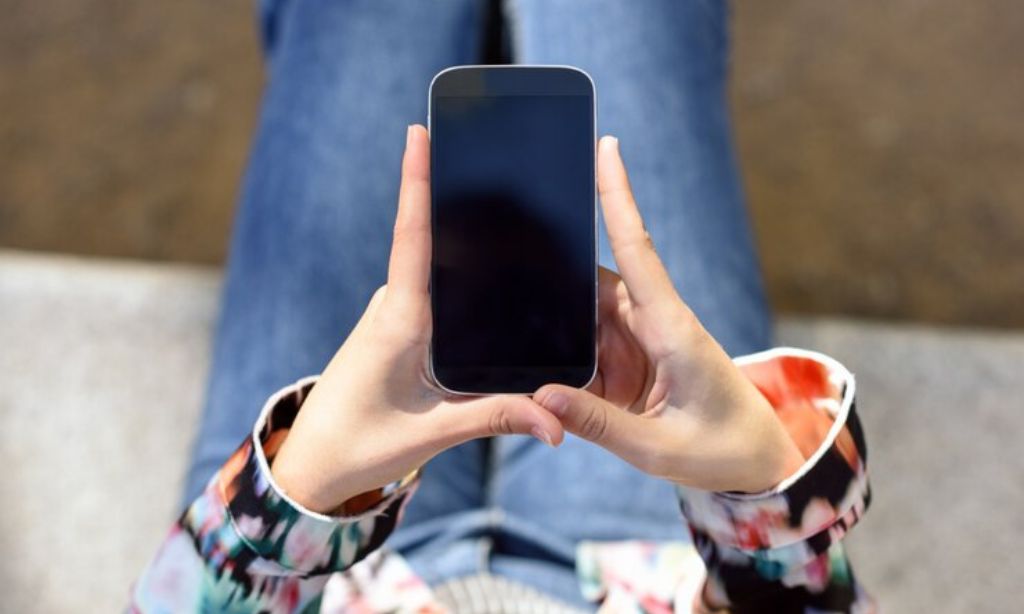Struggling to make a call or browse outside of your Wi-Fi bubble? It happens more often than you’d think. Your smartphone is like a mini computer in your pocket, ready to connect you with the world at any moment.
But what if it only works when hooked up to Wi-Fi? That’s like having a car that won’t drive unless it’s on rails! You’re not alone in this wireless dilemma, and we’ve got some insights that could turn things around.
Did you know that something as simple as checking if airplane mode is on can save you from mobile data despair? In this article, we’ll guide you through a series of steps—basic and advanced—to help restore your phone’s ability to tap into cellular networks.
From tweaking settings to contacting carriers, we’ve laid out solutions for getting back online, even when there’s no Wi-Fi in sight. Ready for relief? Keep reading; answers await!
Why Your Phone Only Works On WiFi?

Sometimes your phone might only connect to the internet through Wi-Fi. This could mean a problem with your mobile network settings or SIM card. Maybe you’ve used up all your data, or there’s an issue with your service plan.
It can also happen if your phone is set to Wi-Fi-only mode.
To get back on the cellular network, make sure mobile data is turned on in your phone’s settings. Check to see if you have a good signal. If not, maybe you’re just in a bad spot for cell service! If everything seems fine but it still won’t work, there might be a glitch with the software on your phone.
Basic Troubleshooting Steps
Before you dive into the nitty-gritty, there are a few basic quick-fixes well worth trying. Think of these initial steps as your go-to checklist to jumpstart your connection—straightforward yet effective in getting back on the cellular grid.
Turning on Mobile Data
Check if mobile data is on. This might sound simple, but it’s often overlooked. Swipe down from the top of your screen to open the Quick Settings panel on Android phones, or go to Settings and tap ‘Cellular’ or ‘Mobile Data’ on an Apple iPhone.
Make sure the switch for mobile data is turned on. If it’s off, just tap it to turn it back on.
Sometimes apps can’t connect because your phone isn’t using cellular data. With mobile data on, you can stay connected even when Wi-Fi is out of reach. Remember that using lots of data might lead to extra charges based on your plan with T-Mobile, AT&T, Verizon’s, or other carriers, including MVNOs and prepaid services.
Always keep track of your usage to avoid surprises!
Turning off Wi-Fi
Go to your phone’s settings and find the Wi-Fi option. Tap it to turn off the Wi-Fi connection. This forces your phone to use mobile data instead of a Wi-Fi network. Without Wi-Fi, you can check if your phone still connects to the internet through its cellular network.
Sometimes, turning off Wi-Fi helps solve problems with slow or unstable connections. Your smartphone might connect better with mobile data when there is no nearby reliable Wi-Fi hotspot.
If your phone works fine on mobile data, you may need to troubleshoot your home internet or public hotspots you frequently use.
Disabling Airplane Mode
Check if airplane mode is on. Your phone can’t connect to the mobile network when it’s active. It stops all wireless communications, which helps during flights. To fix your connection problem, swipe down from the top of your screen and tap the airplane icon again.
This turns off airplane mode.
Make sure you see signal bars after you do this. No bars mean no mobile service; check for possible outages or move to a place with better coverage. If you still have issues even with full bars, it might be time for more troubleshooting steps like updating settings or restarting your phone.
Enabling Data Roaming
Turn on data roaming to keep your phone connected outside your carrier’s network. This helps when traveling. Find the option in your phone settings under “Mobile Network” or “Cellular.” Slide the toggle to turn it on.
But watch out, roaming can lead to extra charges! Always check with your carrier first. If unsure, call them or visit their website for information on fees and how to manage data usage while roaming.
Got an iPhone? Open Settings, tap Cellular, then choose Cellular Data Options, and flip the switch next to Data Roaming. On Android phones, head into Settings, look for Connections or Network & Internet depending on your model, select Mobile Networks, followed by Roaming and enable it there.
Keep an eye on those bars at the top; they’ll tell you if you’re connected after these steps!
Restarting the Phone

Hit the power button and choose “restart” to give your phone a fresh start. It might sound simple, but this step can fix many issues. Your phone clears out the memory that apps eat up and tidies up minor software kinks when it powers back on.
If your cell data still acts up after the reboot, don’t worry—there are more tricks to try!
Make sure you hold down the power button long enough; some phones need a few seconds before they respond. The screen should offer options like “power off” or “restart.” Pick restart for a quick refresh without losing any open apps or tabs.
This often gets things running smoothly again, especially if you haven’t turned off your phone in a while. Keep calm and reboot! Additionally, you can also read about- Wi-Fi vs Li-Fi.
Advanced Troubleshooting Steps
When the simple fixes don’t cut it, it’s time to roll up your sleeves and dive into advanced troubleshooting steps. This is where you get under the hood of your device settings, ensuring everything from carrier updates to SIM card seating aligns perfectly for optimal connectivity.
Updating Carrier Settings
Your phone needs the latest carrier settings to work, right? These updates improve your ability to make calls, send texts, and connect to the internet. Check for a carrier settings update by going into your phone’s settings.
For iPhone users, tap ‘General,’ then ‘About.’ If there’s an update, you’ll see a pop-up window asking you to install it.
Android phones also need updated carrier settings sometimes. Go to ‘Settings,’ choose ‘System updates’ or ‘About phone,’ and look for any available updates. Carrier updates are different from a software update or firmware upgrade because they focus on network and connectivity changes provided by your carrier, like Verizon.
Always keep these up-to-date for the best service on your device.
Reseating the SIM Card
If your phone only works on WiFi, try taking out the SIM card and putting it back in. This is a smart move before you even think of doing a factory reset. Turn off your phone first.
Carefully open the SIM card tray with a paperclip or the tool that came with your device. Take out the SIM for a minute, check it for any signs of damage, then place it back in snugly.
Power on your phone and see if mobile data comes to life.
Sometimes contacts or dust can mess up the connection between your phone and SIM card. Reseating might just be what you need to get things working again without calling for help. If this step gets you back online outside of WiFi zones, great! If not, keep troubleshooting with other steps like resetting network settings or reaching out to US Cellular or another carrier if needed.
Resetting Network Settings
Resetting network settings can make your phone feel brand new when it comes to connecting. This step wipes all Wi-Fi networks, passwords, cellular settings, paired Bluetooth devices, and VPN configurations from your device.
Think of it as a fresh start for your phone’s ability to join networks and pair with other devices.
Before you reset, back up important data to avoid losing anything valuable. On an iPhone running iOS 14 or later, go to ‘Settings’, tap ‘General’, then ‘Reset’, and choose ‘Reset Network Settings‘.
For Samsung users on the latest update, navigate through ‘Settings’ to ‘General Management’, tap ‘Reset’, and select ‘Reset Network Settings’. You’ll need your passcode or PIN before the phone lets you reset these settings.
After this is done, check if mobile data returns and if connections are stronger without Wi-Fi.
What to do when Basic and Advanced Troubleshooting Fails
If your phone still clings to WiFi-only connectivity even after you’ve marched through the basic and advanced troubleshooting steps, it’s time to dig deeper—stay tuned as we explore effective strategies to reclaim your mobile freedom without missing a beat.
Contacting Your Carrier
Sometimes your phone needs a helping hand from the people who provide your service. Call or chat with your carrier’s customer support team. Verizon reps are ready to check on things like cellular data settings for you.
They can tell you if everything is turned on as it should be. They might also suggest using WiFi calling to make calls when inside, where signals can get weak.
If talking with support doesn’t fix the problem, they might say you need a 4G network extender at home. This device boosts your cell signal and could be just what you need to stop relying solely on WiFi.
The key is to reach out—help from an expert at Verizon could turn things around quickly!
Backing Up and Factory Resetting Your Phone
Before you reset your phone, make sure to back up all your photos, videos, and important files. You can use cloud services or a computer to save everything. This way, you won’t lose any precious memories or valuable information when you restore your phone to its factory settings.
To start the factory reset process on an iPhone or Samsung device, find the ‘Reset’ option in your settings menu. For iPhones, go to Settings > General > Reset, and then tap ‘Erase All Content and Settings’.
On Samsung devices, head over to Settings > General Management > Reset and select ‘Factory Data Reset’. This will wipe your phone clean like it’s brand new out of the box. Make sure you have those backups ready, because once this is done, there’s no going back!
When to Seek Professional Help
Sometimes your phone needs a pro. If you’ve tried all the basic and advanced steps without luck, it’s time for expert help. A technician can check things we can’t, like internal issues or antenna problems.
They have tools to test your phone’s hardware and software.
If your phone still won’t connect to anything but Wi-Fi, visit a store that services phones. Tell them about the troubles you’re having with mobile hotspots, calls, or hotspot tethering.
It could be something simple or more complex, like a problem with iOS 16 updates on iPhones. Don’t wait too long—get it checked out!
Conclusion
Now you know how to get your phone back on track when it only works on WiFi. Take charge and try these simple fixes first. If they don’t work, dive deeper with advanced steps. Remember, help is out there—from checking DownDetector.com for outages to calling your carrier.
Stay connected, no matter where you are!
